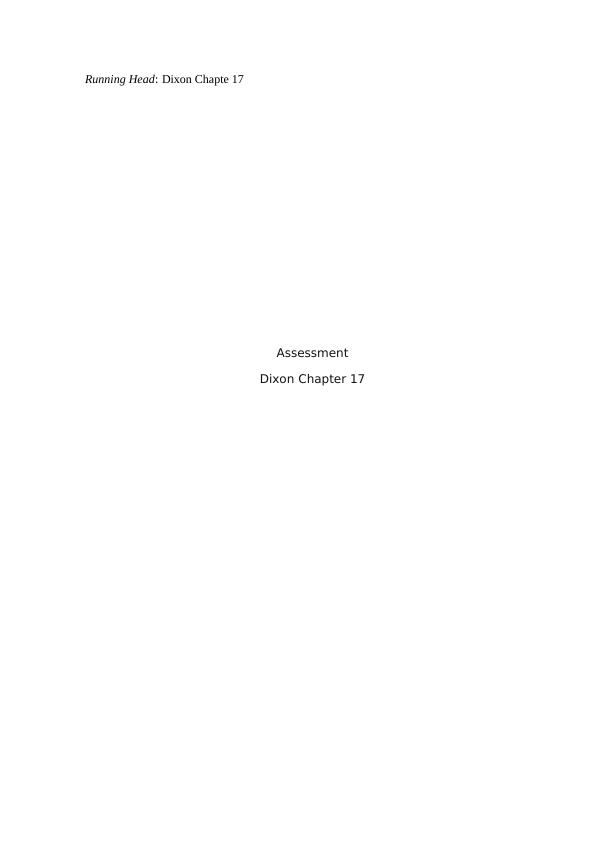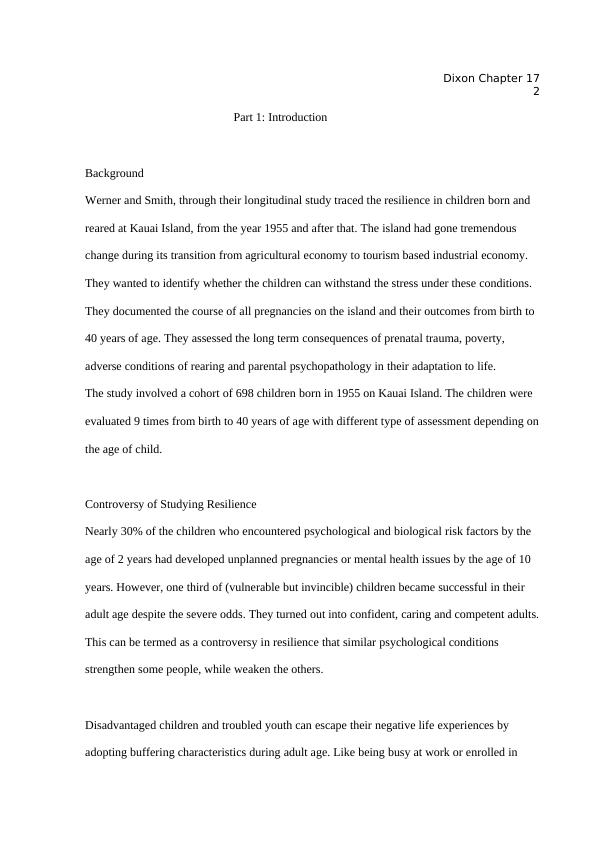Assessment - Dixon Chapter 17 | Assignment
Added on 2022-09-08
6 Pages1209 Words23 Views
End of preview
Want to access all the pages? Upload your documents or become a member.
Impact of Poverty on Childhood Development
|3
|1161
|86
Essay on Global Issues of Child Development
|10
|2736
|49
Social Assessment of Roberto Torres and his Family
|5
|1247
|289
Protective and Risk Factors in Dealing with Stressful Events
|5
|721
|389
Social Determinants of Health and Illness in Contemporary Australian Society
|6
|1569
|322
Importance of Immunization Programs for Children
|5
|823
|382


